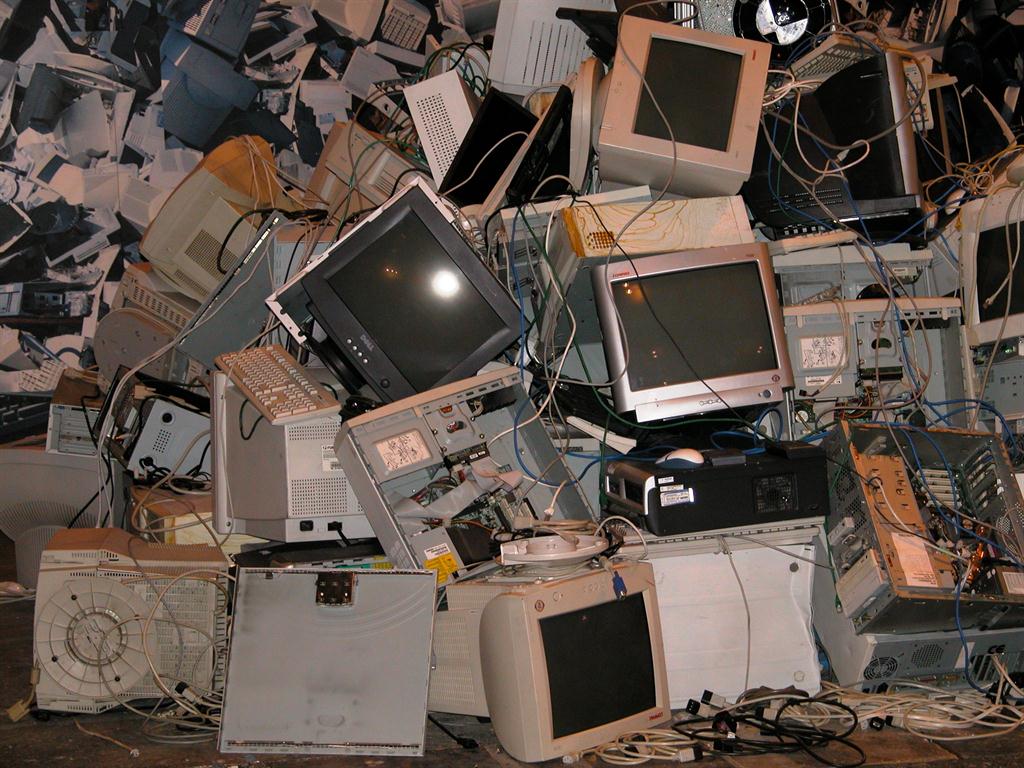Namibia a major e-waste producer
Namibia is ranked as the seventh highest producer of electronic and electric waste (e-waste) in Africa, primarily because of the relatively high living standards of a small group of citizens, and despite the small population size.
The Global E-waste Monitor 2017, compiled by the United Nations and the International Solid Waste Association (ISWA) calculated that on average every Namibian citizen generates around 6 kg of e-waste per year, totalling 14 000 tonnes annually.
South Africa, with a population of 55 million citizens, compared to Namibia's 2.3 million, ranked eighth out of the top ten African e-waste producing countries, with an average of 5.7 kg e-waste produced per inhabitant each year.
The average amount of e-waste produced each year in Namibia is higher than that of citizens in Nigeria and Kenya on an individual basis.
Seychelles occupied the first spot, with around 11.5 kg of e-waste produced each year by 93 million citizens, and Libya and Mauritius ranked second and third, respectively.
Namibia's ranking was attributed to “the relatively high living standards”.
There is a direct correlation between living standards and amount of e-waste generated.
In terms of total volume of e-waste produced by countries annually in Africa, Egypt and South Africa produce the largest amounts, followed closely by Nigeria, which is directly related to population numbers.
Worldwide, Norway, United Kingdom and Denmark have the highest e-waste generating populations measured by e-waste generated per inhabitant, with Norway generating 28.5 kg e-waste per resident.
In 2016, it was estimated that globally, a staggering 44.7 million tonnes of e-waste was generated that year, up by 3.3 tonnes or 8% more compared to 2014.
Waste of precious materials
ISWA explained that the e-waste, consisting of “everything from end-of-life refrigerators and television sets to solar panels, mobile phones and computers”, equalled, in weight, “almost nine Great Pyramids of Giza or 4 500 Eiffel Towers, or 1.23 million fully loaded 18-wheel 40-ton trucks, enough to form a line 28 160-km line, the distance from New York to Bangkok and back.”
Experts said they foresee a further 17% increase - to 52.2 million tonnes of e-waste by 2021 - the fastest growing part of the world's domestic waste stream.
Last year, ISWA emphasised that “only 20% of 2016's e-waste is documented to have been collected and recycled despite rich deposits of gold, silver, copper, platinum, palladium and other high value recoverable materials. The conservatively estimated value of recoverable materials in last year's e-waste was US$55 billion, which is more than the 2016 GDP of most countries in the world.”
Records show that in 2016, 4% of e-waste was thrown into landfills and 76%, or 34.1 tonnes ended up incinerated, in landfills, recycled in informal (backyard) operations, or remain stored in our households.
A major contributor to increasing levels of e-waste is the increasing affordability of electronic and electrical devices.
What you can do
In Namibia, e-waste company NamiGreen is tackling the growing problem of e-waste.
NamiGreen CEO Per Hansen said the company ensures that all e-waste collected in Namibia is exported and safely disposed of through recycling.
Hansen explained that the benefits of recycling e-waste include minimising the overall carbon dioxide impact globally, “as it takes less energy to recycle electronics for metals than to mine for new metals”.
Recycling further creates jobs and reduces the strain on the environment as e-waste often contain hazardous materials like mercury, lead, barium, arsenic, antimony, and cadmium and others.
In Namibia, Windhoek, Rundu and Walvis Bay produce the highest volume of e-waste countrywide.
JANA-MARI SMITH
The Global E-waste Monitor 2017, compiled by the United Nations and the International Solid Waste Association (ISWA) calculated that on average every Namibian citizen generates around 6 kg of e-waste per year, totalling 14 000 tonnes annually.
South Africa, with a population of 55 million citizens, compared to Namibia's 2.3 million, ranked eighth out of the top ten African e-waste producing countries, with an average of 5.7 kg e-waste produced per inhabitant each year.
The average amount of e-waste produced each year in Namibia is higher than that of citizens in Nigeria and Kenya on an individual basis.
Seychelles occupied the first spot, with around 11.5 kg of e-waste produced each year by 93 million citizens, and Libya and Mauritius ranked second and third, respectively.
Namibia's ranking was attributed to “the relatively high living standards”.
There is a direct correlation between living standards and amount of e-waste generated.
In terms of total volume of e-waste produced by countries annually in Africa, Egypt and South Africa produce the largest amounts, followed closely by Nigeria, which is directly related to population numbers.
Worldwide, Norway, United Kingdom and Denmark have the highest e-waste generating populations measured by e-waste generated per inhabitant, with Norway generating 28.5 kg e-waste per resident.
In 2016, it was estimated that globally, a staggering 44.7 million tonnes of e-waste was generated that year, up by 3.3 tonnes or 8% more compared to 2014.
Waste of precious materials
ISWA explained that the e-waste, consisting of “everything from end-of-life refrigerators and television sets to solar panels, mobile phones and computers”, equalled, in weight, “almost nine Great Pyramids of Giza or 4 500 Eiffel Towers, or 1.23 million fully loaded 18-wheel 40-ton trucks, enough to form a line 28 160-km line, the distance from New York to Bangkok and back.”
Experts said they foresee a further 17% increase - to 52.2 million tonnes of e-waste by 2021 - the fastest growing part of the world's domestic waste stream.
Last year, ISWA emphasised that “only 20% of 2016's e-waste is documented to have been collected and recycled despite rich deposits of gold, silver, copper, platinum, palladium and other high value recoverable materials. The conservatively estimated value of recoverable materials in last year's e-waste was US$55 billion, which is more than the 2016 GDP of most countries in the world.”
Records show that in 2016, 4% of e-waste was thrown into landfills and 76%, or 34.1 tonnes ended up incinerated, in landfills, recycled in informal (backyard) operations, or remain stored in our households.
A major contributor to increasing levels of e-waste is the increasing affordability of electronic and electrical devices.
What you can do
In Namibia, e-waste company NamiGreen is tackling the growing problem of e-waste.
NamiGreen CEO Per Hansen said the company ensures that all e-waste collected in Namibia is exported and safely disposed of through recycling.
Hansen explained that the benefits of recycling e-waste include minimising the overall carbon dioxide impact globally, “as it takes less energy to recycle electronics for metals than to mine for new metals”.
Recycling further creates jobs and reduces the strain on the environment as e-waste often contain hazardous materials like mercury, lead, barium, arsenic, antimony, and cadmium and others.
In Namibia, Windhoek, Rundu and Walvis Bay produce the highest volume of e-waste countrywide.
JANA-MARI SMITH





Comments
Namibian Sun
No comments have been left on this article